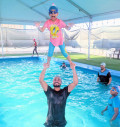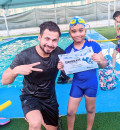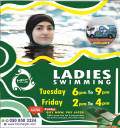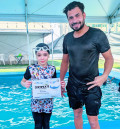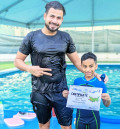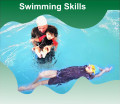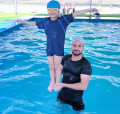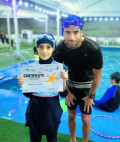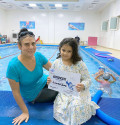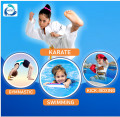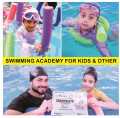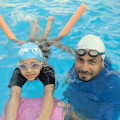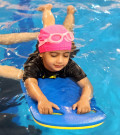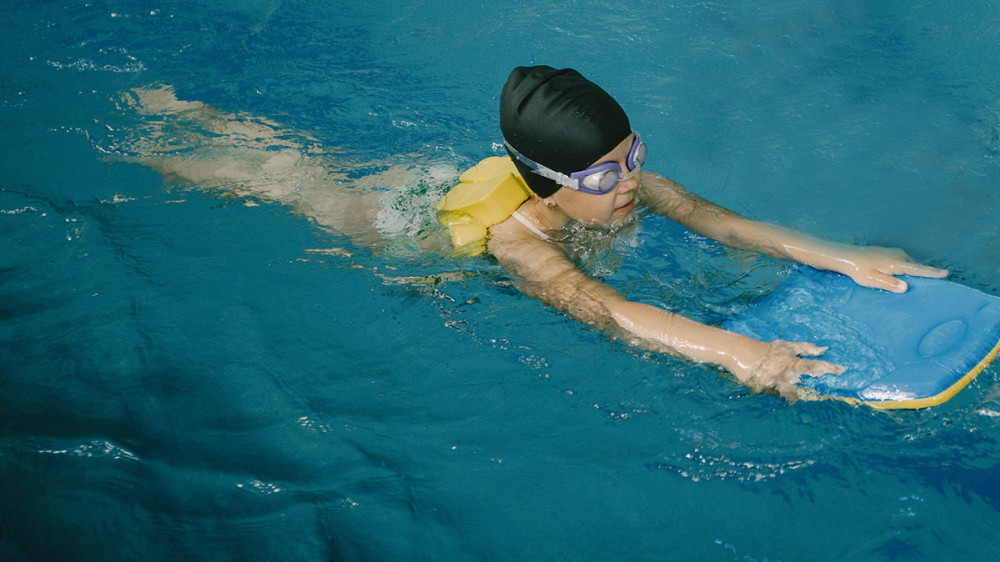
Swimming Gears – Equip and Train Yourself to Swim Confidently
2022-12-27 - Swimming
First-time swimmers need to focus on learning the correct body position, stroke, and breathing technique to become more comfortable and effective in the water. It is mandatory to wear a proper swimming costume as you start your swimming practice. Swimming gears help swimmers get comfortable in their beginning phase.
Swimming goggles help to open your eyes while swimming, helps you build confidence since you're able to navigate your way safely around other swimmers. Goggles are also known to prevent eye infections caused by chlorine and other unwanted things. There are a variety of swimming goggles available to choose from, based on your size and comfort level. Meanwhile, a swim cap, makes your training more comfortable. It eliminates the drag in the water and helps you swim faster. Swim caps provide a protective layer against chlorine damage. You may choose from a variety of caps, mesh cap, silicone cap or silicon mesh cap. Carrying a microfiber towel is useful. It is compact the microfiber material is highly absorbent, hence helping in quick dry as you dab your body with it.
A pull buoy will give enough buoyancy for legs, thus allowing to better the arm strokes without having to concentrate on kicks. Also, fins make swimming fast and fun. They not only increase the speed in water but also give legs enough resistance for a full leg workout. Swim fins are best to tighten thighs and glutes. A beginner swimmer can make use of a kickboard also as it helps to focus on legs and hips and ensure proper footwork. It is also useful in breathing exercises.
The various pieces of equipment that are used by swimmers include items such as swimsuits, goggles, swim caps, earplugs, swim fins, and other items that are designed to improve a swimmer's performance or comfort in the water are referred to as swimming gear. Swimming gear can vary depending on the needs and preferences of the swimmer, as well as the type of swimming they will be doing (e.g. racing, training, recreational swimming).
Some common types of swimming gear include:
Swimsuits: A swimsuit is a crucial piece of gear for any swimmer. Look for a swimsuit that fits well, is made of durable material, and is suitable for your needs (e.g. racing, training, recreational swimming).
Goggles: Goggles can help protect your eyes from chlorine and other chemicals in the water, as well as improve visibility. Look for goggles that fit well and are comfortable to wear for extended periods of time.
Swim caps: A swim cap can help reduce drag in the water and keep your hair out of your face. Look for a swim cap made of a durable, latex-free material.
Earplugs: Earplugs can help prevent water from getting into your ears, which can cause ear infections or discomfort. Look for earplugs made of a soft, hypoallergenic material.
Swim fins: Swim fins can help improve your kick and leg strength and are often used in swim training. Look for fins that are comfortable to wear and made of a durable material.
Pull buoy: A pull buoy is a foam device that is placed between the legs to help improve upper body strength and technique. Look for a pull buoy that is the right size for your body and made of a durable material.
Some points to keep in mind when purchasing a swimsuit or goggles:
Fit: It's important to find a swimsuit or goggles that fit well. A swimsuit that is too loose or too tight can be uncomfortable and hinder your performance in the water. Goggles that are too tight may cause discomfort or even headaches, while goggles that are too loose may allow water to leak in.
Material: Look for swimsuits and goggles that are made of high-quality, durable materials. Swimsuits made of chlorine-resistant fabric can last longer and maintain their shape, while goggles made of silicone, or a similar material can provide a comfortable, secure fit.
Purpose: Consider the purpose of your swimsuit or goggles. If you'll be competing in races, you may want a swimsuit with a more streamlined design and less drag. If you'll be swimming in open water, you may want goggles with a larger lens for better visibility.
Comfort: Comfort is important, especially when you'll be wearing your swimsuit or goggles for long periods of time. Look for swimsuits with comfortable straps and liners, and goggles with a comfortable fit and padding around the eye cups.
Price: Finally, consider your budget when purchasing a swimsuit or goggles. While higher-priced options may offer more features and better performance, you can often find good quality products at more affordable prices.
Taking care of your swimming gear is important as it contributes to maintain the durability and hygienic properties of the accessories
Proper care can help extend the life of your gear and ensure that it lasts as long as possible. Moreover, wearing clean, well-maintained gear can be more comfortable, especially if you'll be wearing it for long periods of time. Wearing gear that is in good condition can also improve your performance in the water. For example, wearing a swimsuit that is too loose or too tight can be uncomfortable and hinder your movement, while goggles that leak water can be distracting. Proper care of your gear can also help prevent the growth of mold or bacteria, which can lead to unpleasant odours and even health issues. By taking care of your swimming gear, you can ensure that it remains in good condition and performs at its best, which can make your time in the water more enjoyable and productive.
Tips for caring for your swimming gear:
- Rinse your gear thoroughly after each use: After swimming, rinse your gear with clean water to remove chlorine, salt, and other chemicals. This can help prevent damage and extend the life of your gear.
- Store your gear properly: Store your gear in a cool, dry place away from direct sunlight. Avoid hanging wet gear in a damp location, as this can lead to the growth of mold or bacteria.
- Use a swimsuit cleaner: After each use, consider using a swimsuit cleaner to help remove chlorine and other chemicals from your swimsuit. Follow the instructions on the cleaner to ensure that it is used properly.
- Avoid leaving your gear in a hot car: Avoid leaving your gear in a hot car, as high temperatures can damage or fade your gear.
- Replace your gear when necessary: Finally, be sure to replace your gear when it becomes worn or no longer fits properly. Wearing worn or ill-fitting gear can be uncomfortable and may even hinder your performance in the water.
Using the right swimming gear can help make swimmers happier. Swimming gear that is designed to improve performance can help boost a swimmer's confidence and motivation, which can lead to a more positive experience in the water. Swimming gear that is visually appealing can also contribute to a swimmer's happiness. It makes a swimmer feel good about themselves enhancing their overall enjoyment of the sport.
.







.jpg)















































